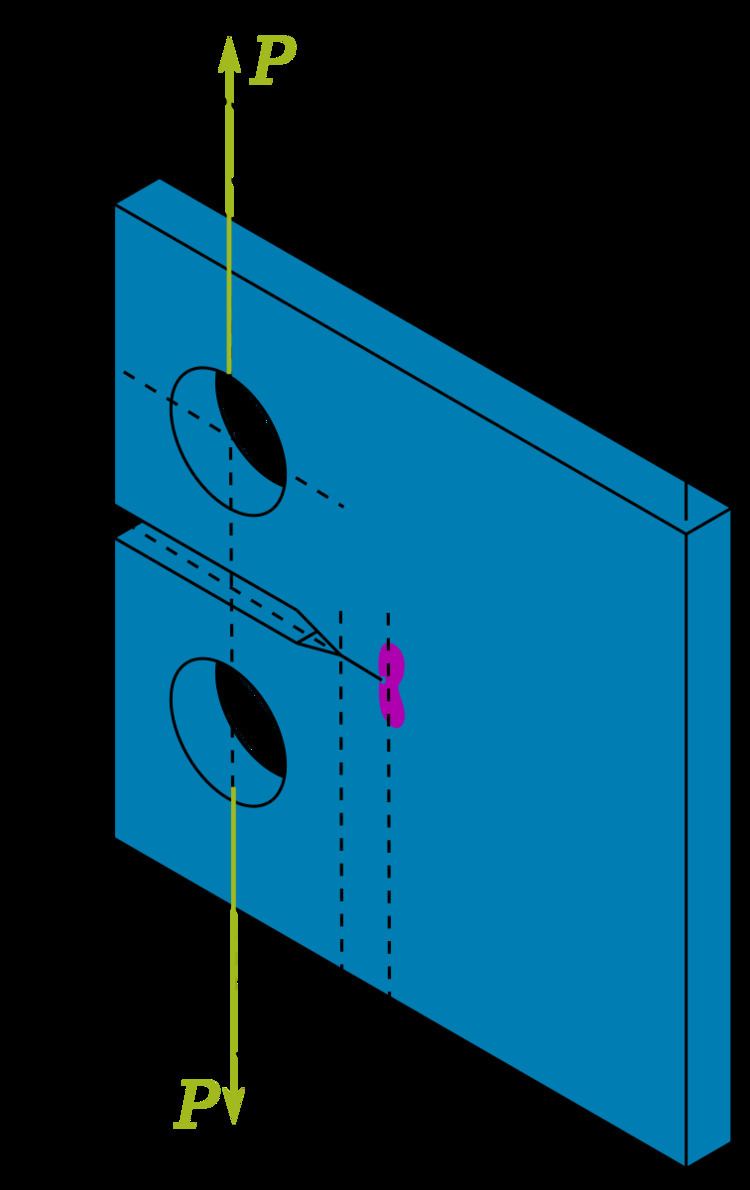 | ||
A compact tension specimen is a notched sample and is a standard specimen in accordance with ASTM and ISO standards. The purpose of using a notched sample is to create a fatigue crack by cycling the sample to maximum and minimum loads. The fatigue crack will begin on the point of the notch and extend through the sample, the fatigue crack is a good representation of 'real life' inconsistencies which are introduced to a material due to processing techniques or welding. CT specimens are used extensively in the area of fracture mechanics and corrosion testing, in order to establish fracture toughness values for a material. According to the standards the constraining dimension of the CT specimen is the thickness of the material. CT specimens are used for experiments where there is a shortage of material available due to their compact design. For rolled materials the notch should be aligned with the roll direction where the material is weakest. This will allow the user to insure that all results achieved are conservative (worst-case scenario).
Stress intensity factor
The stress intensity factor at the crack tip of a compact tension specimen is
where
